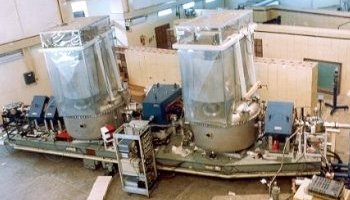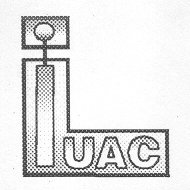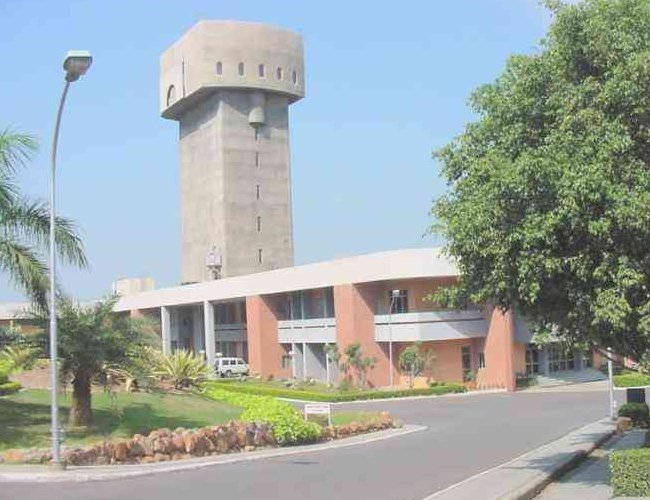 |
|
 |

Features
Important specifications
Acceptance: 1-10 msr (variable)
Mass dispersion: 0-10 mm/% (variable)
Energy acceptance: ± 20%
Mass acceptance: ± 5%
Mass resolution: 1/300 (typical)
Total length: ~ 8.8 m
|

|
Reduction of higher order aberrations
A compact multipole, placed between ED1 and MD, with quadrupole,
sextupole and octupole windings (in one plane) helps in
reducing angle and energy dependent aberrations and in achieving energy
achromatism at the focal plane. Suitable sextupole and octupole fields are
super-imposed on the quadrupole field in Q4 by pole face shifts to reduce
the mass-dependant 'focal plane tilt/curvature' aberration.
|
Slot in ED1 for better beam rejection
HIRA is the first RMS to allow provision to take the primary beam out without
allowing it to scatter from the anode of the first electrostatic dipole.
This is achieved by a horizontal slot (of 15 mm) cut out at the centre of
the second half of the anode plate in ED1. This slot allows scattered beam
particles to be collected on a beam catcher behind ED1 thereby reducing
the background at the focal plane. The field non-uniformity is minimised by the
use of special "rose-shim" profile around the periphery of the slot. Beam
rejection factor achievable in HIRA is of the order of 1013 which
depends on the reaction and to some extent on primary beam tuning. The beam
catcher current signal (with ED1 voltages off) and the ratio of left and right
monitor detectors along with the BPM signal
(upstream of target) help in optimising and reproducing the primary beam trajectory.
|
Rotation of HIRA
The entire spectrometer is mounted on a platform which can rotate, about the vertical
axis passing through the target and beam axis on a curved monorail
(levelled to better than 0.1 mm), with the
help of a motor. The angular scale is graduated with a least count of
0.1o (corresponding to ~ 1 cm arc at a distance ~ 5.7 metres).
This option is particularly useful for measuring evaporation residue
angular distribution and transfer products around the grazing angle.
|
Target chambers and accessories
HIRA is provided with a sliding seal chamber (300 mm inner diameter) which
allows rotation of HIRA with respect to the beam direction by large angles
(upto 25o) without disturbing chamber vacuum (~ 10-7
Torr). The sliding seal chamber is provided with option to mount a charge
reset foil 10 cm downstream of target and monitor detectors at various
angles. Two re-entrant cups allow mounting of HPGe detectors at close
proximity (~ few cm away) of the target. Large re-entrant cups, replacing top
and bottom lids, allow mounting of larger detectors such as BGO multiplicity
filter and/or large scintillator detectors. A small aluminium chamber with
conical entrance and exit coulplings is used in place of the sliding seal
chamber during residue-tagged γ-spectroscopy and γ-multiplicity
measurements.
|
Swivel stands for γ-detectors
Two swivel stands are installed on either side of the beam-line, around the
target chamber, where upto eight HPGe detectors (four on either side) can be mounted. Large
detector holders are also available for the swivel stands in which eight
Clover detectors and four HPGe or neutron detectors can be mounted.
|
Focal plane detectors
A variety of detectors are available to be used at the focal plane of HIRA.
The choice of detectors is guided by the type and energy of the particles
and also the underlying physics interest. The most common detectors in use
are:
2D position sensitive, large area, Multi-wire proportional counter
Deep, split-anode, Ionization chamber and
2D position sensitive, 50mm x 50mm, silicon detector.
For more information on detectors, please contact:
Detector laboratory.
|
|
Contact us:
N. Madhavan
Inter University Accelerator Centre
Aruna Asaf Ali Marg, Post Box 10502
New Delhi 110067, India
Phone: +91 11 26893955
Telefax: +91 11 26893666
Email: madhavan@iuac.res.in
|
|
 |



